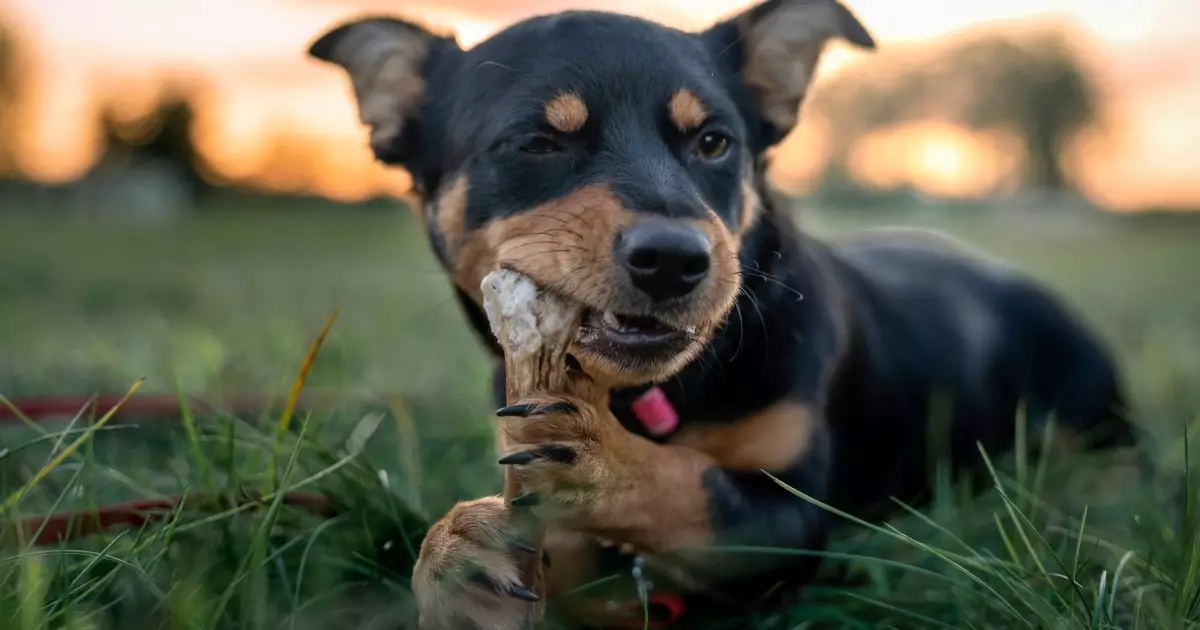Navigating the realm of dog nutrition can be daunting, especially when it comes to the hotly debated topic of bones. With an influx of contradictory information, dog owners often find themselves in a confusing position regarding what bones are safe for their furry companions. While bones can offer numerous benefits, they can also pose significant risks. The key is to arm yourself with knowledge and consult your veterinarian before making decisions about introducing bones into your dog’s diet.
The Dangers of Cooked Bones
It might be tempting to toss your dog a leftover chicken wing or rib, but cooked bones are one of the most dangerous options available. The cooking process alters the structure of the bone, making it more brittle and prone to splintering. These splinters can lead to catastrophic health issues, ranging from broken teeth and cuts in the mouth to severe gastrointestinal blockages that could require emergency surgery. According to the FDA, numerous dogs have reported adverse reactions to commercially available bone products, many of which are treated with harmful preservatives and flavorings. Owners must be mindful that even products labeled as “safe” can carry inherent risks, leading to conditions that may endanger your pet’s life.
Raw Bones: The Safer Alternative?
While raw bones are not without their risks, many veterinarians consider them to be a safer option compared to their cooked counterparts. Raw lamb or beef bones, particularly those that are soft enough for dogs to chew and digest, can provide great chewing satisfaction. However, pet owners should still approach this with caution. The inherent risk of choking or damaging teeth remains, and raw chicken bones should typically be avoided due to their tendency to splinter. Moreover, improper handling can lead to bacterial contamination, which can adversely affect your dog’s health. Owners should consult their veterinarian for advice on safe handling practices if choosing to incorporate raw bones into their dog’s diet.
A Comprehensive Look at Chew Products
When it comes to chew products, owners are often torn between various options, including rawhide, bully sticks, and more. Rawhide chews may seem like a convenient choice, but they are not without their drawbacks. The trace chemicals left after manufacturing and potential bacterial contamination raise significant red flags. In contrast, bully sticks present a more digestible alternative. Nevertheless, these chews can still pose a choking hazard and may lead to bacterial infections. No matter the choice of chew, supervision is crucial.
The Debate Over Recreational Bones
Recreational bones, such as large femur bones that still contain marrow, can provide a satisfying chewing experience for dogs. However, they are not designed to be consumed entirely. Instead, they should be regarded as tools for mental stimulation and dental health. It’s vital to monitor your dog while they chew these bones to ensure they do not break them down to a point that could compromise safety. Veterinarians are divided on the advisability of giving bones at all, with some recommending avoiding them altogether due to the various associated risks.
Guidelines to Ensure Safe Chewing
If you decide to introduce bones or chews into your dog’s routine, there are several best practices that can mitigate the hazards. First and foremost, always supervise your dog during chewing sessions to catch any signs of distress. Additionally, if a bone has been significantly chewed down or becomes jagged, it should be discarded immediately. Be cautious with dogs that have undergone dental work, as they might be more susceptible to injury from harder bones. For dogs that tend to gulp their food, bones might not be the best option; opting for smaller or shorter bones can reduce the risk of choking.
The Health Benefits Hidden in Chewing
Chewing isn’t merely a habit; it’s an essential activity that offers a range of health benefits. Chewing on raw bones can stimulate saliva production, which is crucial for preventing plaque and tartar buildup, and ultimately supporting dental health. Additionally, chewing aids digestion and strengthens stomach muscles, fostering a healthier gut. Beyond the physical benefits, this activity also serves as a means of mental enrichment, relieving anxiety and promoting overall well-being.
Making Informed Choices as a Dog Parent
As a responsible pet owner, understanding the pros and cons of feeding your dog bones or chews empowers you to make informed choices. While some may advocate for alternatives like bone powder for mineral supplementation, the intrinsic benefits of chewing cannot be overlooked. Ultimately, the decision rests on a careful consideration of your dog’s unique traits, preferences, and health needs, in consultation with your veterinarian. Prioritize safety and well-being to elevate your pet’s quality of life, ensuring that your choices contribute positively to their happiness and health.

